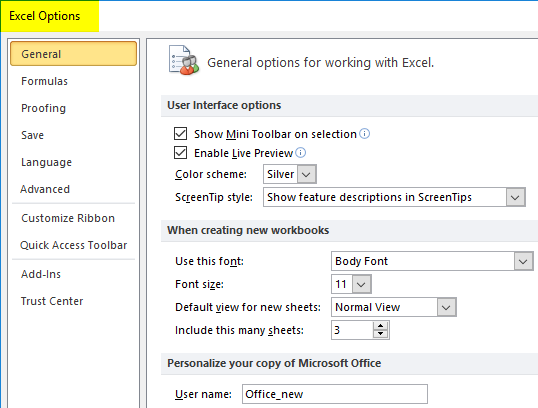

In the Excel Options Window, choose Add-ins.
#ANOVA DATA ANALYSIS EXCEL HOW TO#
Here’s how to turn it on in the Microsoft Windows operating system. The Toolpak is an Excel add-in from Microsoft that’s included with Excel, but isn’t turned on. One of the less obvious features in Excel is the Data Analysis Toolpak. If you’re analyzing data in Excel, then it’s natural to make use of the tools that Microsoft provides for you. We’ll begin with one-way ANOVA, which looks at the effect of a single factor. Let’s work through a practical example in Excel. To learn more check out this glossary of Lean Six Sigma terms Large p-values might lead you to act like the null hypothesis is true, even though you know that it’s not really true, just a reasonable model. Small p-values make you think that the null hypothesis is not a reasonable model. For one-way ANOVA, the null hypothesis is that the means for each level of your factor are the same.Ī rough interpretation would be that the p-value reflects how much confidence you can have that the null hypothesis is a reasonable model. The p-value has meaning only with respect to the null hypothesis of the ANOVA analysis. Most of the time, a key result of an ANOVA analysis is a p-value. Remember that the null hypothesis is a useful concept for helping us make comparisons, even though we already know that for real group averages to all be the same would be a remarkable coincidence. ANOVA sets up these rules by asking how sure we are that the means are the same, a concept that we refer to as the null hypothesis. If we guess too high for one group and too low for another group, we might easily reach an incorrect conclusion, such as predicting that the supplier with the strongest tape on average has the weakest tape.ĪNOVA gives us mathematical sets of rules, that hold certain given assumptions, to decide when we can have confidence that the real average of one group is different from the real average of one or more other groups. We'll know that our sample average is not the same as the real average, there’s no easy way to know when our guess is too high or too low. This variation between the sample average and the overall average we’ll call bias.īecause of within-group variation and bias, comparisons among groups become harder. Another important point is that we won’t expect the average strength of our sample to be the same as the average strength if we taped a million boxes. The differences in strength measurements from the same supplier’s tape give us within-group variation. Instead, we’ll measure the strength from a sample of taped boxes and use those measurements to guess what the numbers would look like if we taped a million boxes.Īn important point is that we won’t expect all the measurements in a group to be the same.Ĭonsider the tape example again.

But if we taped those million boxes and measured the peel strength, we would have used up all of the tape. If you could tape 1 million boxes from a batch of tape, those million might represent the entire population that we want to know about. Inferential analysis is the formal way of saying that we want to look at a sample of measurements and make an educated guess about what all of the possible measurements might be like if we could take them.

All the strength measurements for the same supplier’s tape form a group of measurements.ĪNOVA is an inferential statistical analysis. For example, if you want to know whether tapes from three different suppliers have the same peel strength, the suppliers are your factor. While ANOVA has many varieties, the essential purpose of this family of analyses is to determine whether factors have an association with an outcome variable.įactors are the variables that you will use to categorize your outcome variable into groups.


 0 kommentar(er)
0 kommentar(er)
